-
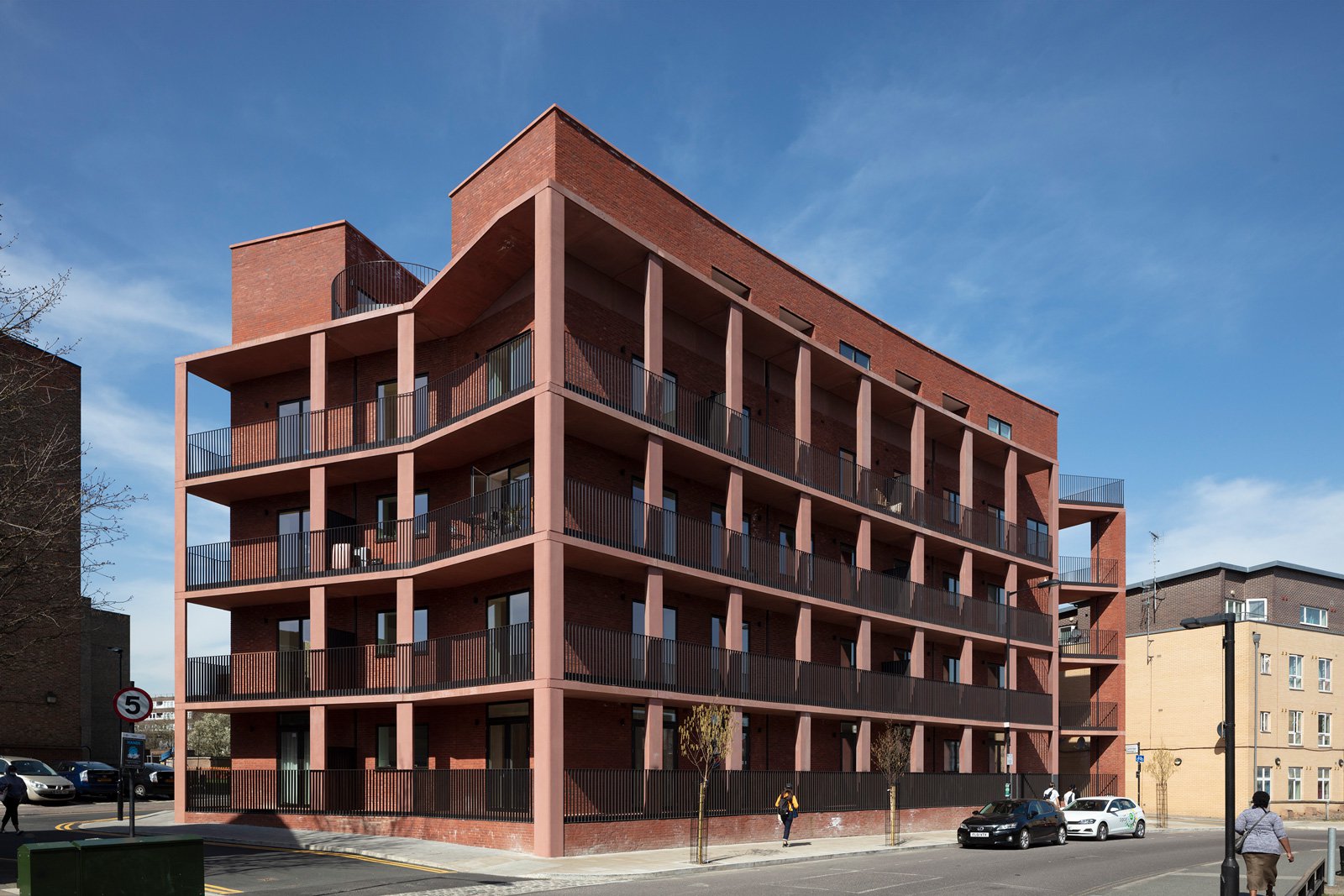
Wilmott Court, Well Street elevation – The building has apartments set around a three-storey hall on its lower floors, while above on the remaining top two floors there are eight houses arranged around an open courtyard
-
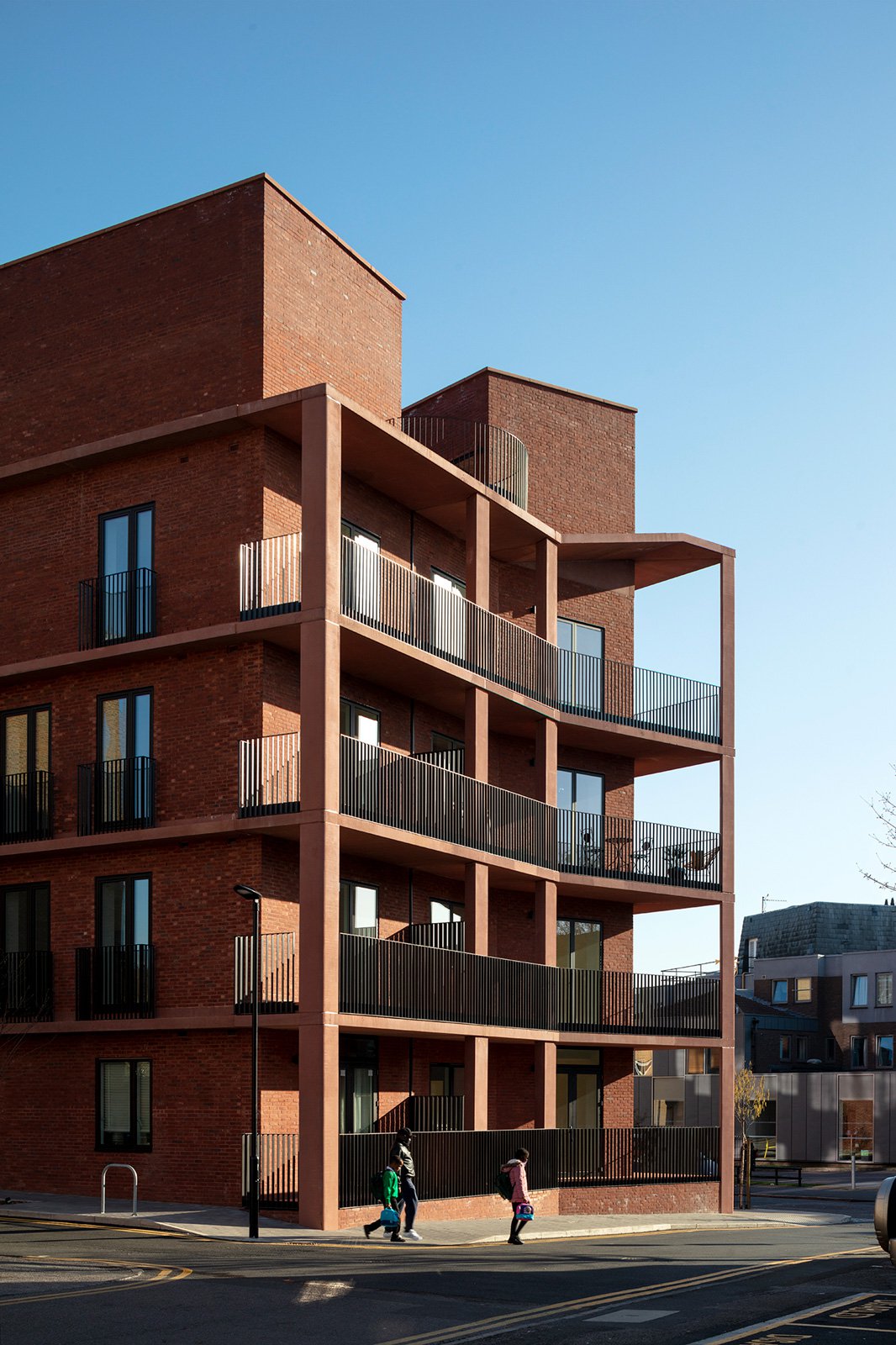
Wilmott Court, from Woolridge Way – The handmade-brick buildings are separated but the use of a red pigmented flush mortar clearly identifies them as a pair within Hackney and imbues them with a civic quality
-
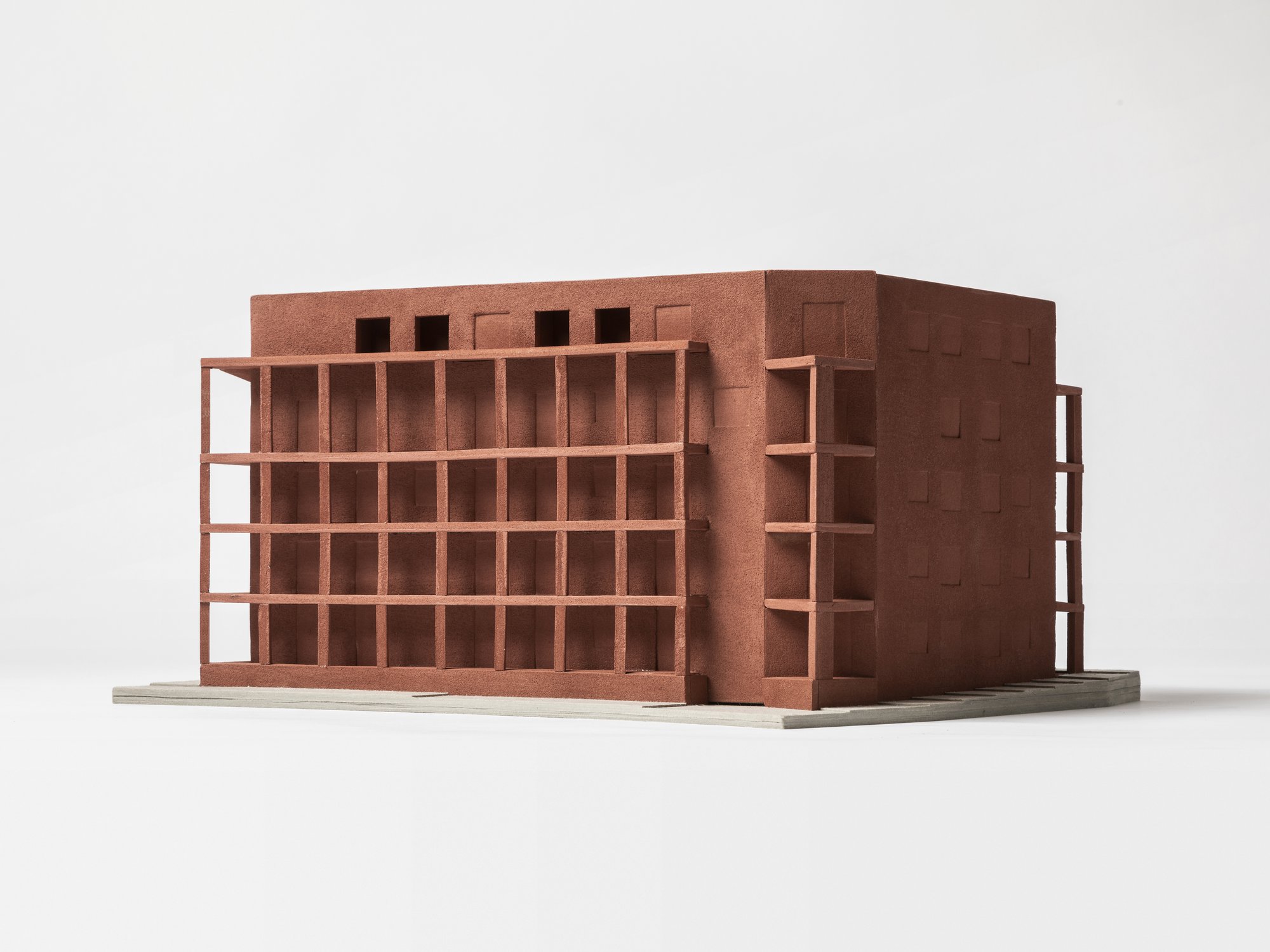
Wilmott Court, model looking west from Well Street – An important aspect of the design is the bringing together of two architectural traditions: one where the wall is used to contain rooms within monolithic forms; the other where the frame is used to create space
-
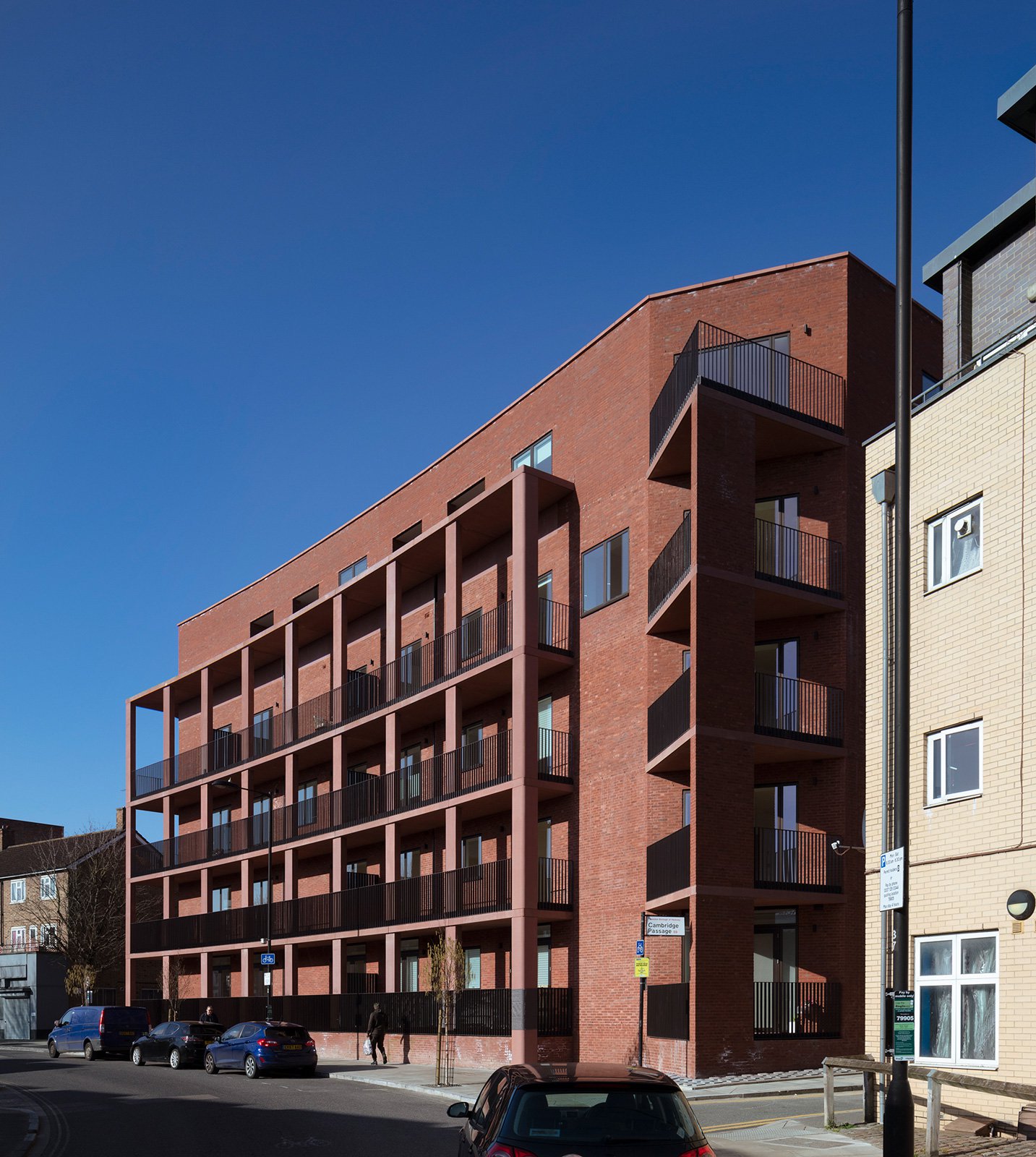
Wilmott Court, Well Street elevation – Each building occupies its respective site with generous external public space interwoven along the street and within the estate
-
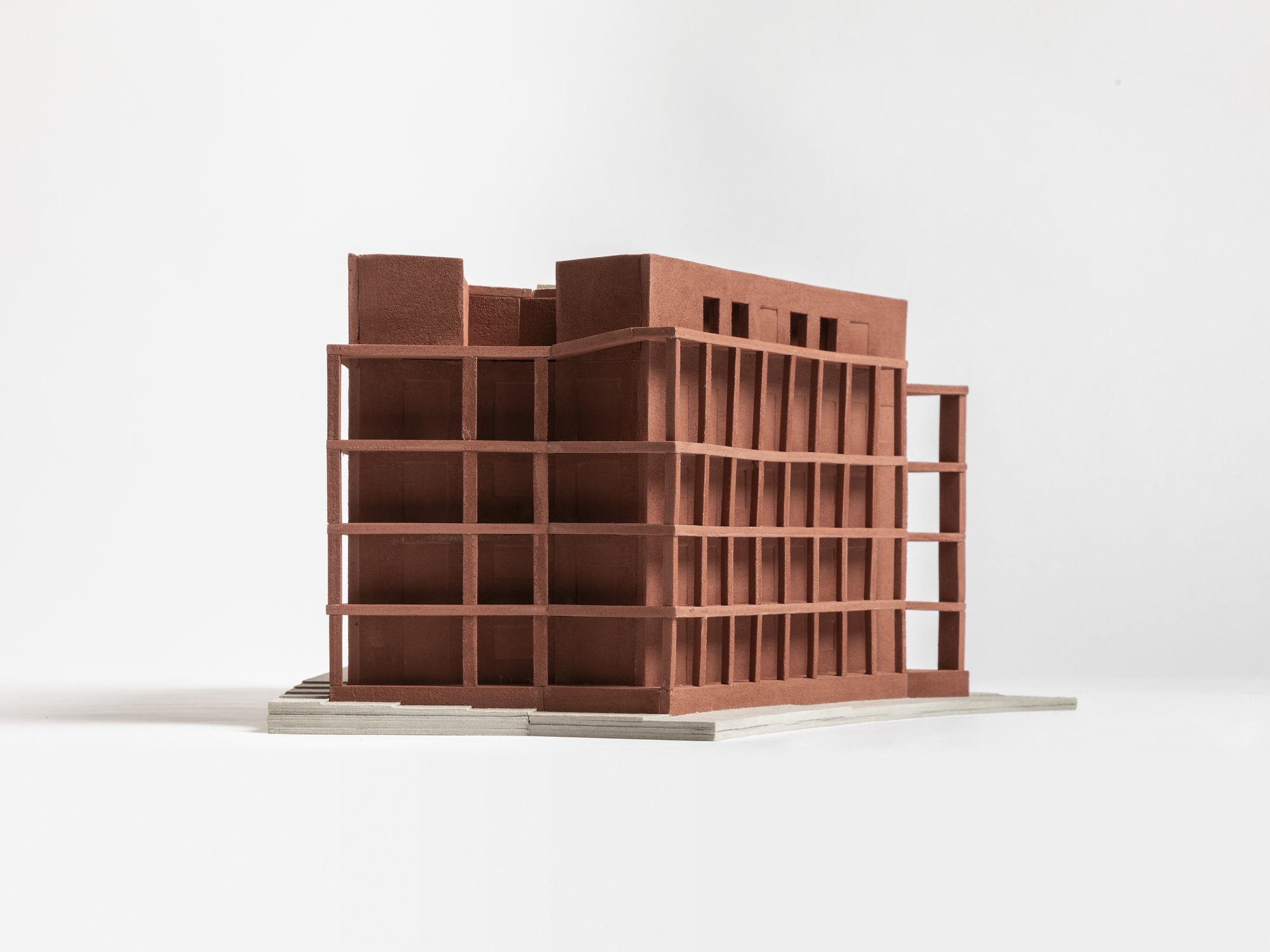
Wilmott Court, model looking north – The precast concrete frame that wraps around the surface of the building varies in depth in response to orientation, proximity to adjacent buildings, as well as towards quiet and away from busy thoroughfares, offering shelter and privacy from nearby street life
-

Wilmott Court, planometric – The layered wall also creates a buffer between the private domain of the home and the public one of the Borough
-
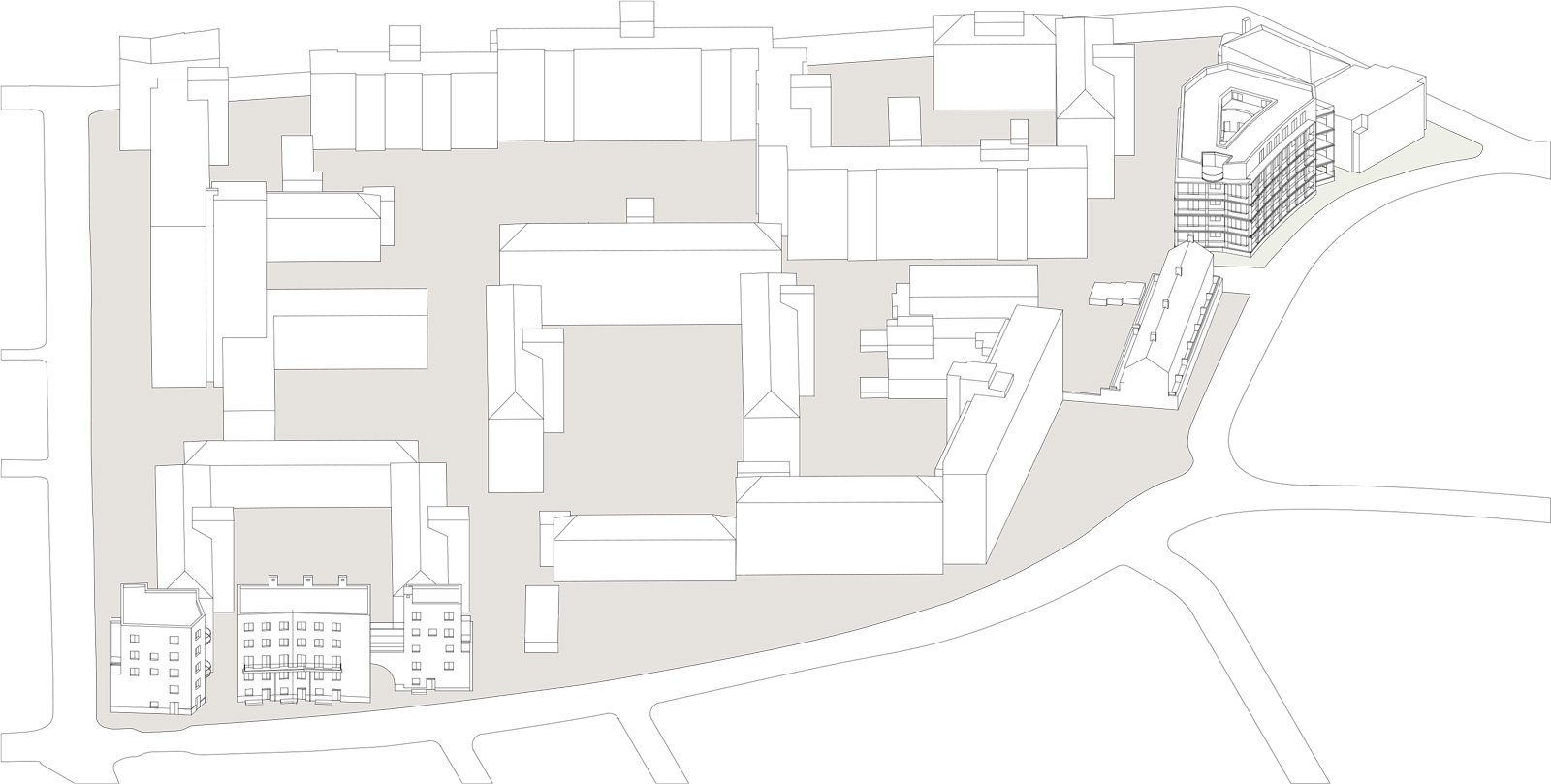
Frampton Park Estate, planometric – Located some 300m apart along Well Street from Taylor Court & Chatto Court, Wilmott Court replaces Lyttelton House, a small building which accommodated six homes that no longer met modern requirements
-

Wilmott Court, loggia – Bringing together two architectural traditions offers parity between a life lived indoors and one lived outside
-
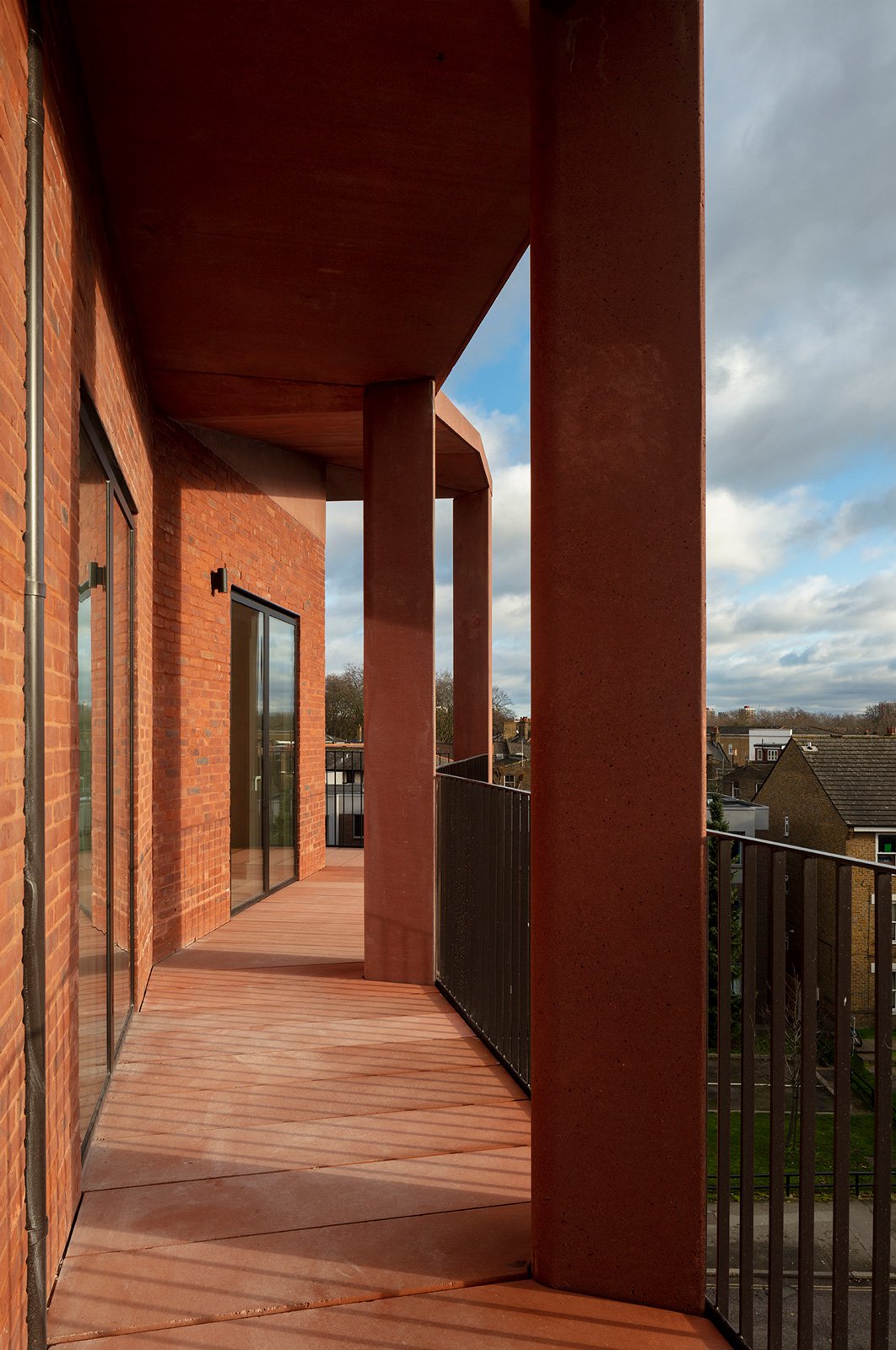
Wilmott Court, loggia – Loggias are composed of precast concrete columns and balcony units, which in turn support brick walls and create open-air circulation and generous balconies for residents
-
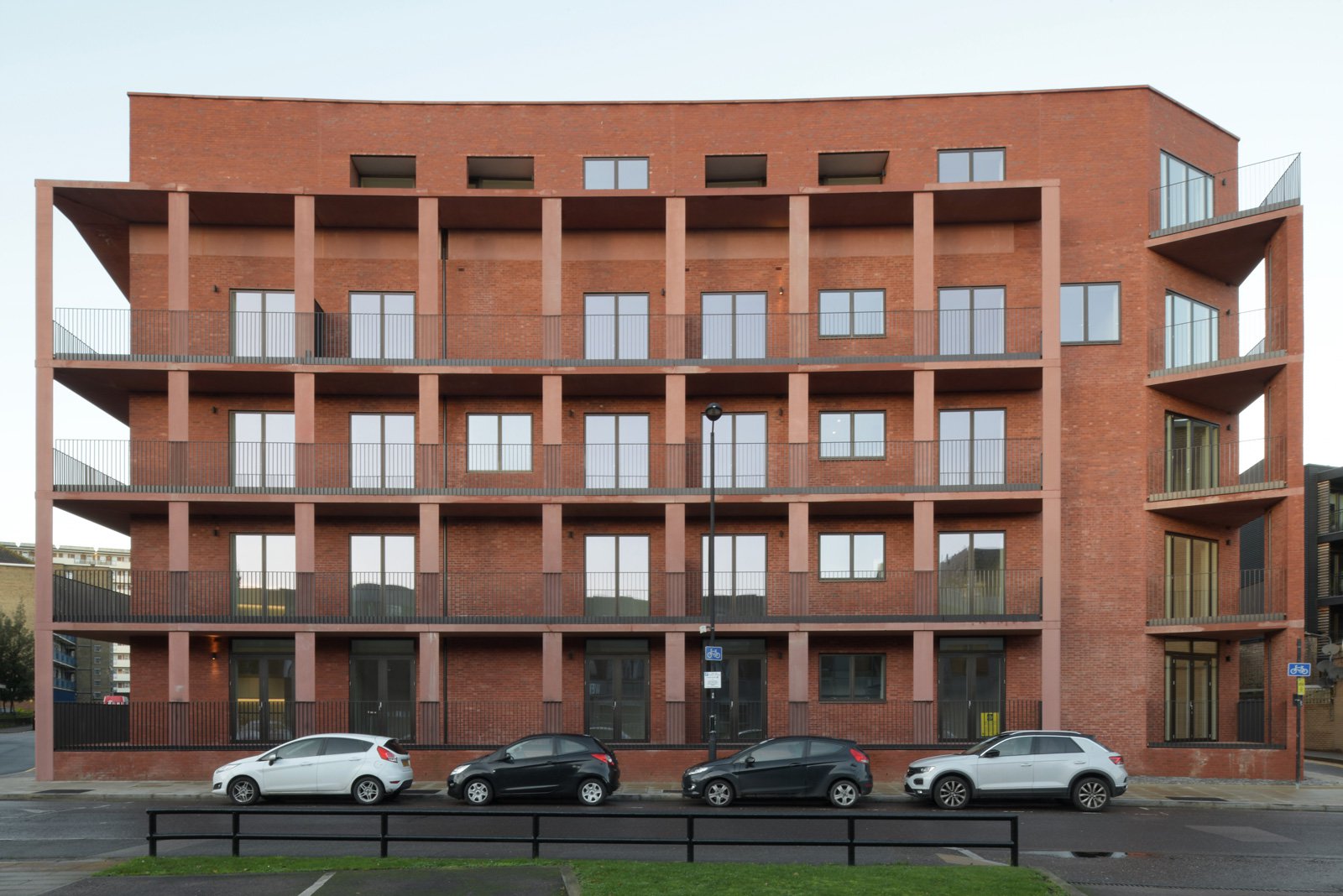
Wilmott Court, seen from Well Street – The range of accommodation makes for an exceptionally varied and engaging group of homes that prioritises the individual experience in purposeful opposition to more anonymous mass housing
-
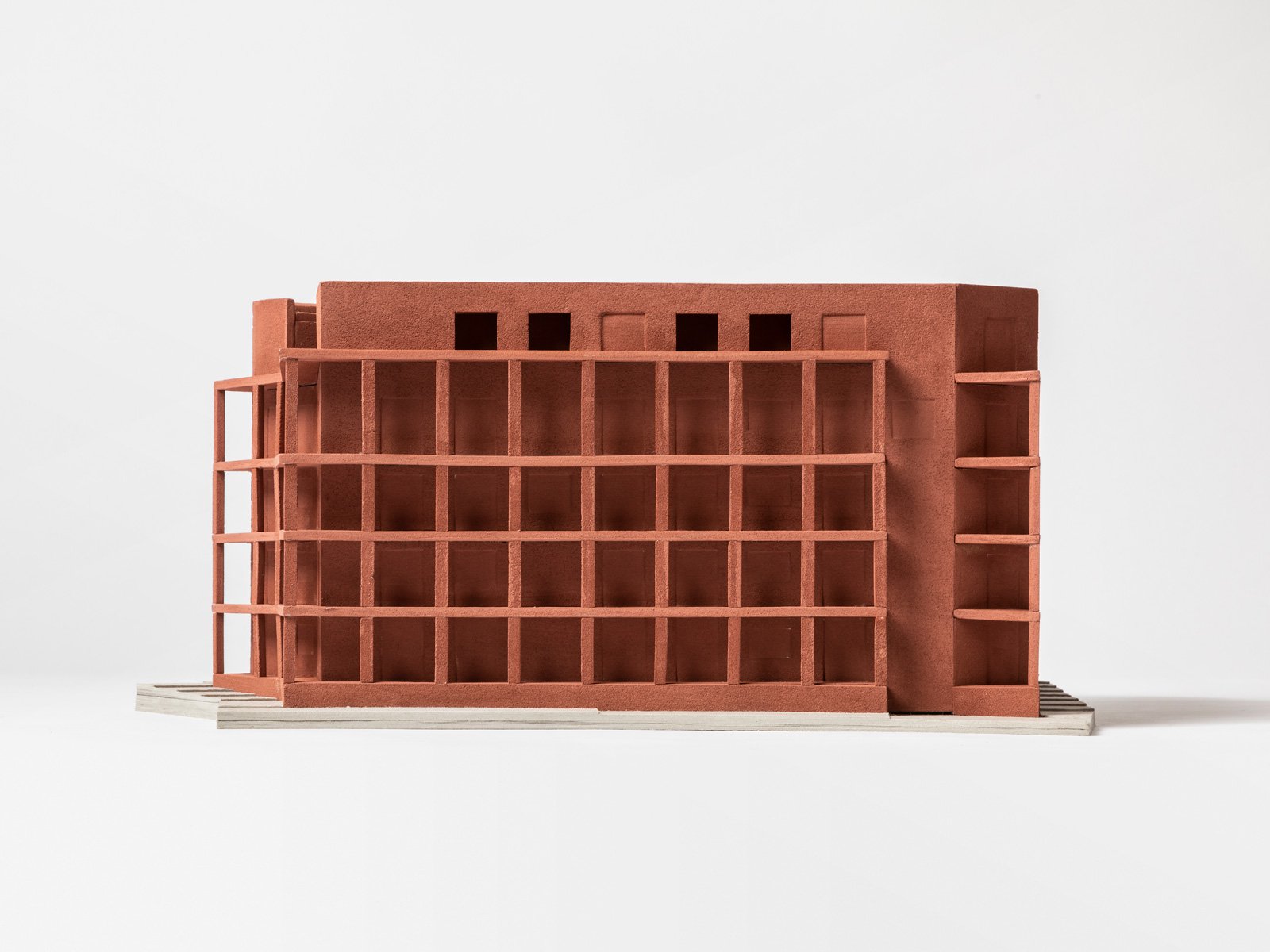
Wilmott Court, model seen from Well Street – We considered the façade in terms of both construction and the environment, and for its potential sociality as a liminal space to inhabit
-

Wilmott Court – The grouping and massing of the new housing blocks negotiate between the contrasting urban conditions of the post-war estate and the Victorian street, repairing the urban fabric in a way that extends the public realm
-

Wilmott Court, ground floor plan – The building accommodates 25 shared ownership and private sale homes
-
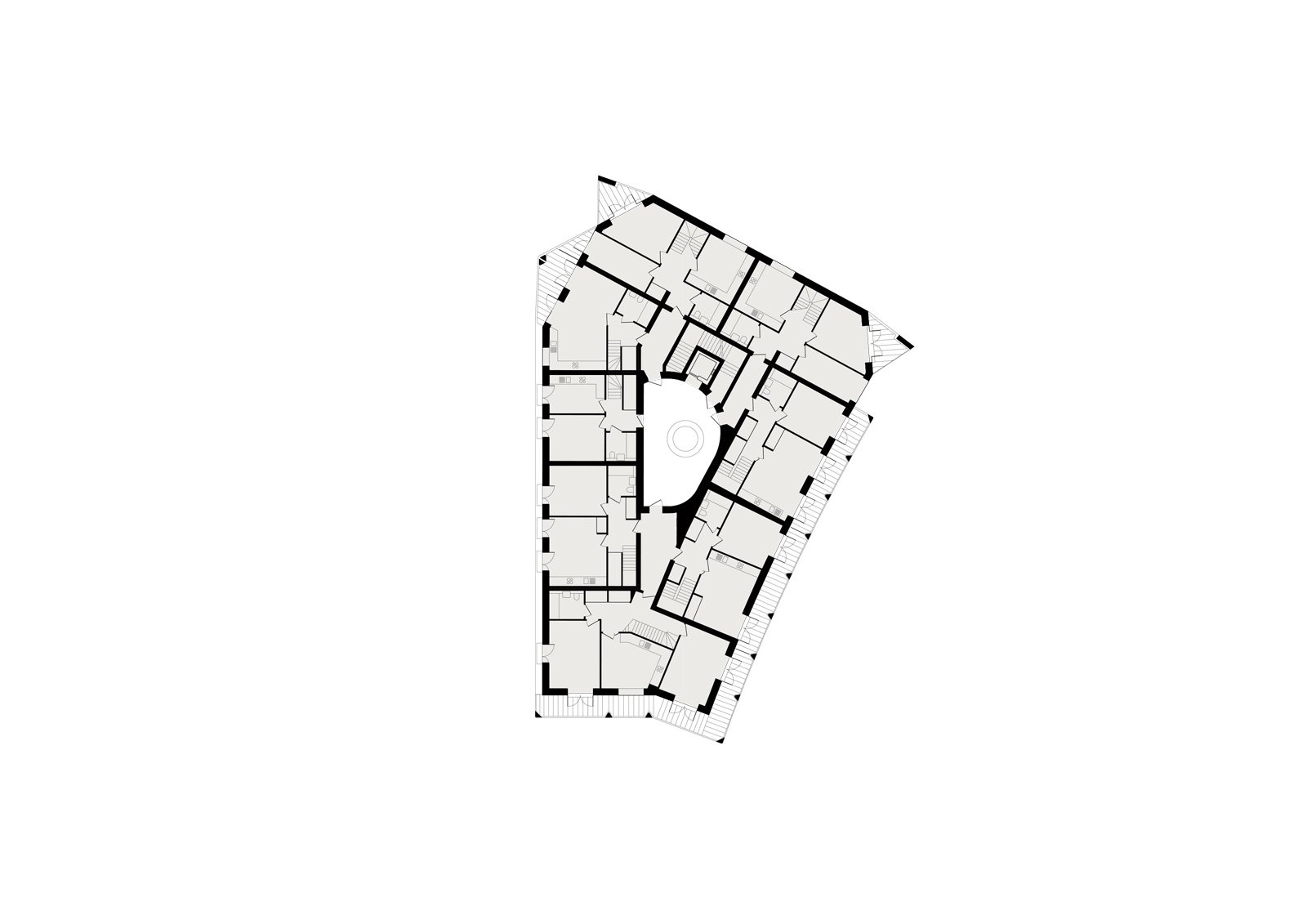
Wilmott Court, third floor plan – Entrances and communal areas reiterate the individual experience in the way they range from the lofty to the more intimate to accommodate both a collective and singular appreciation of these shared spaces
-

Wilmott Court – Precast figures contrast with monolithic bodies of wild bond brickwork, with the façades and liminal spaces immediately adjacent to them establishing a dialectic between two types of space and two forms of construction
-
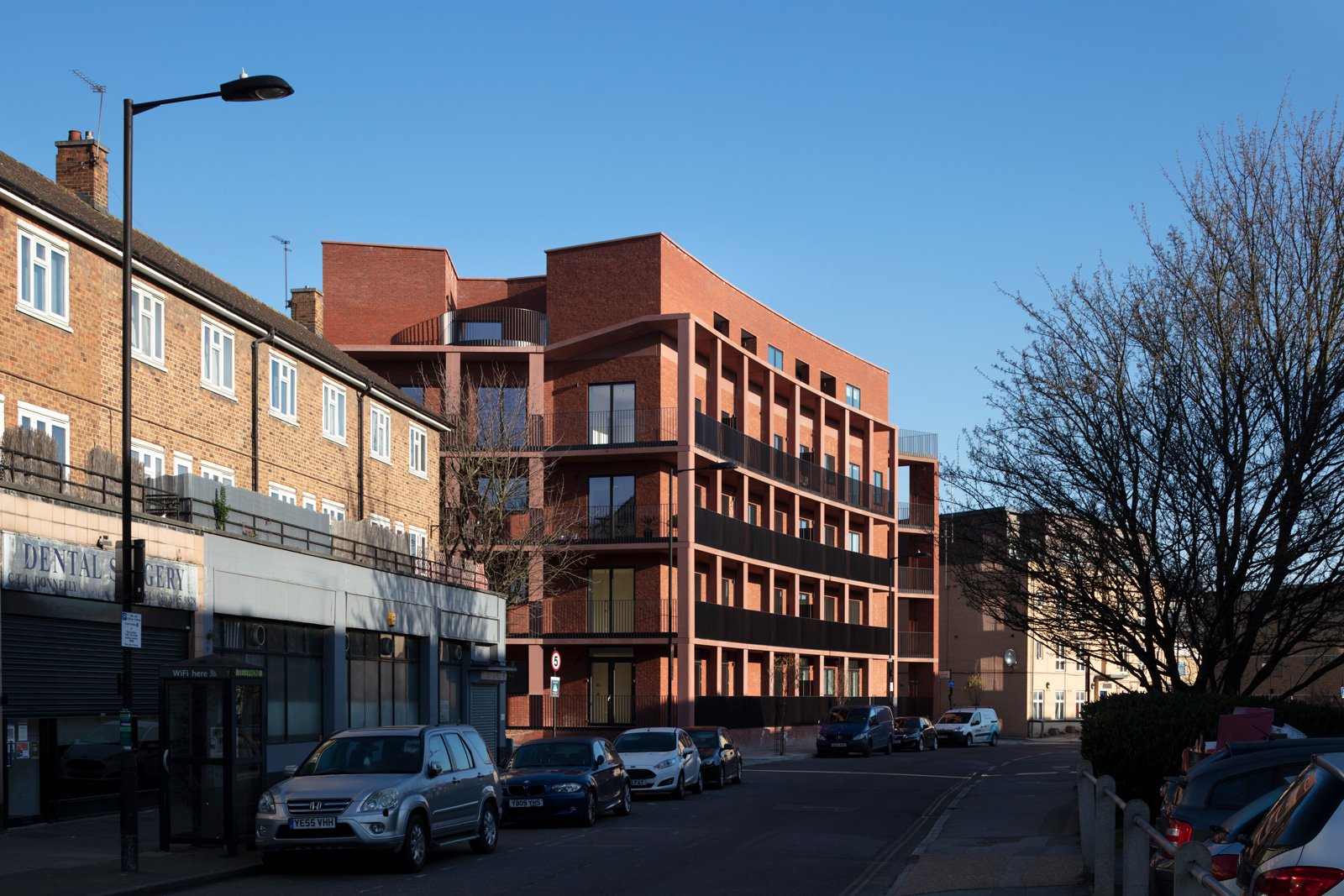
Wilmott Court – The wedge-shaped footprint reinforces the historic curvature of the street line, addressing the urban grain and improving its legibility
-
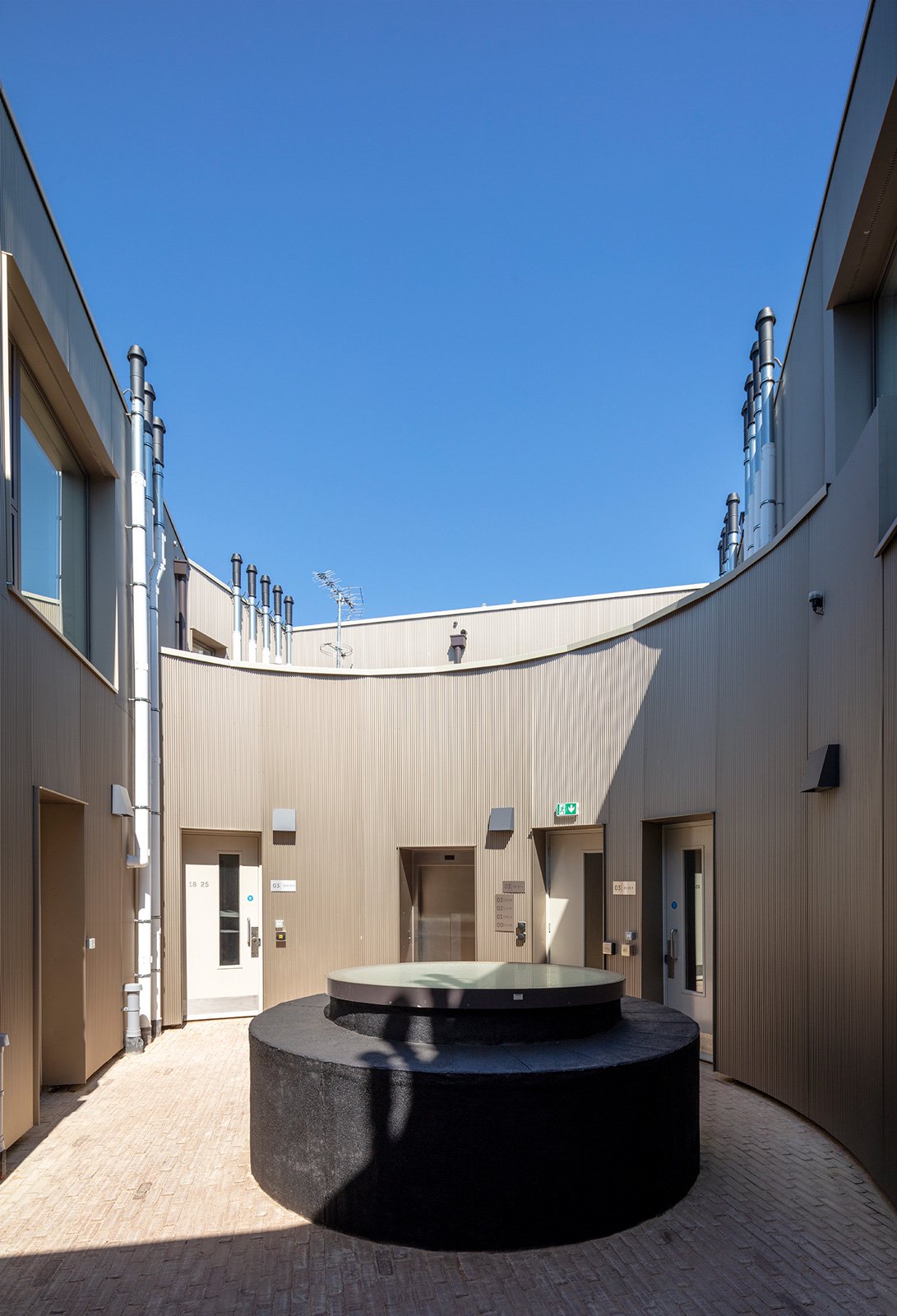
Wilmott Court – The top two floors have eight houses arranged around an open courtyard
-
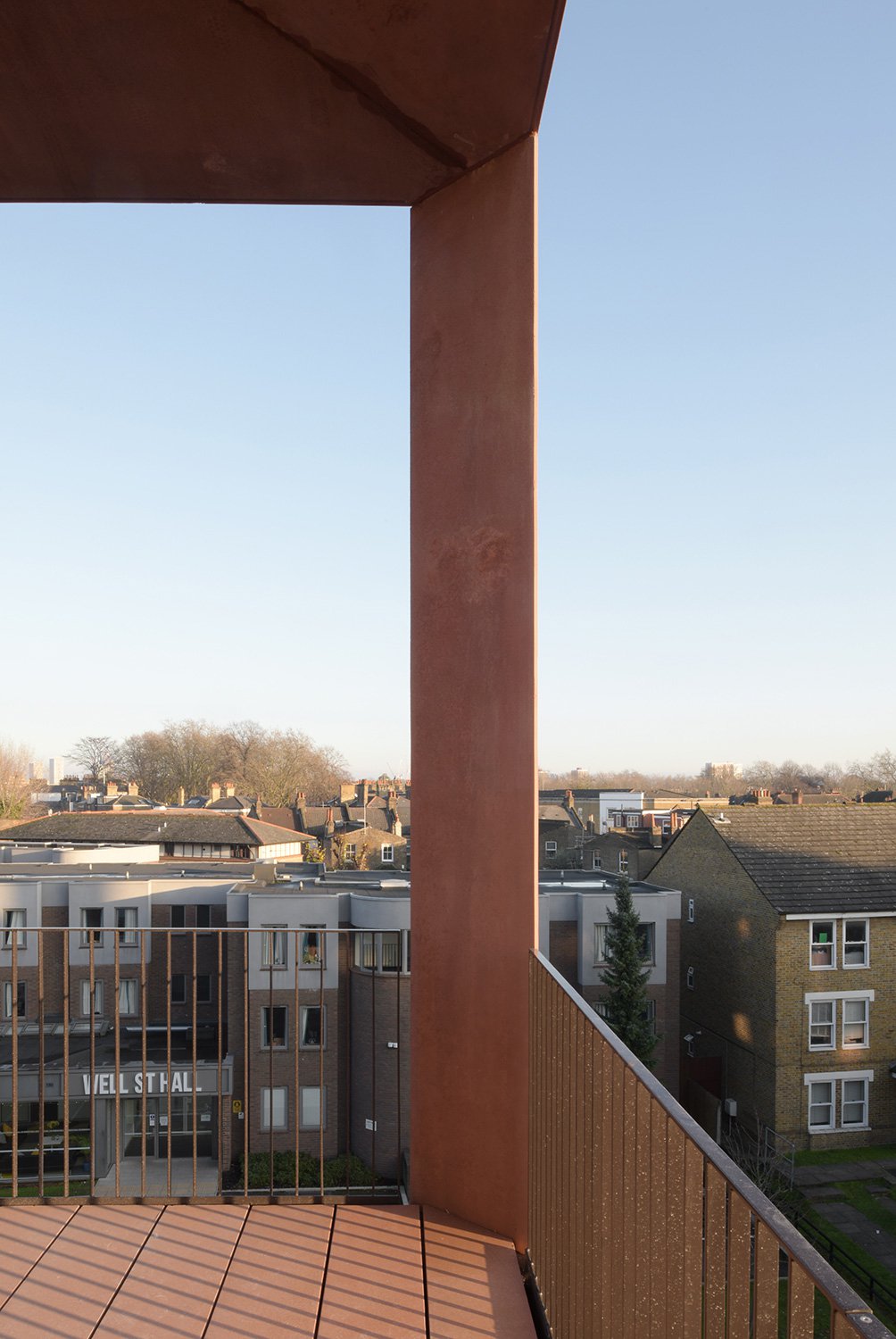
Wilmott Court, loggia – Outdoor amenity space became the inspiration for an architecture at the threshold between domestic interior and urban landscape
-

Wilmott Court section
-

Wilmott Court – The lower three floors are planned around a hall and stair, lit by the open court above
-

Wilmott Court, east elevation – The wall is an active part in how the architecture responds to its community and is itself a social space. Its liminality heightens residents’ awareness of their environment, the seasons and weather
-

Wilmott Court, west elevation – A purposeful notion of sociality through a heightened awareness of belonging to a place
-

Wilmott Court – The journey from street to home choreographed with loggias, courts, generous hallways and conspicuous staircases
-
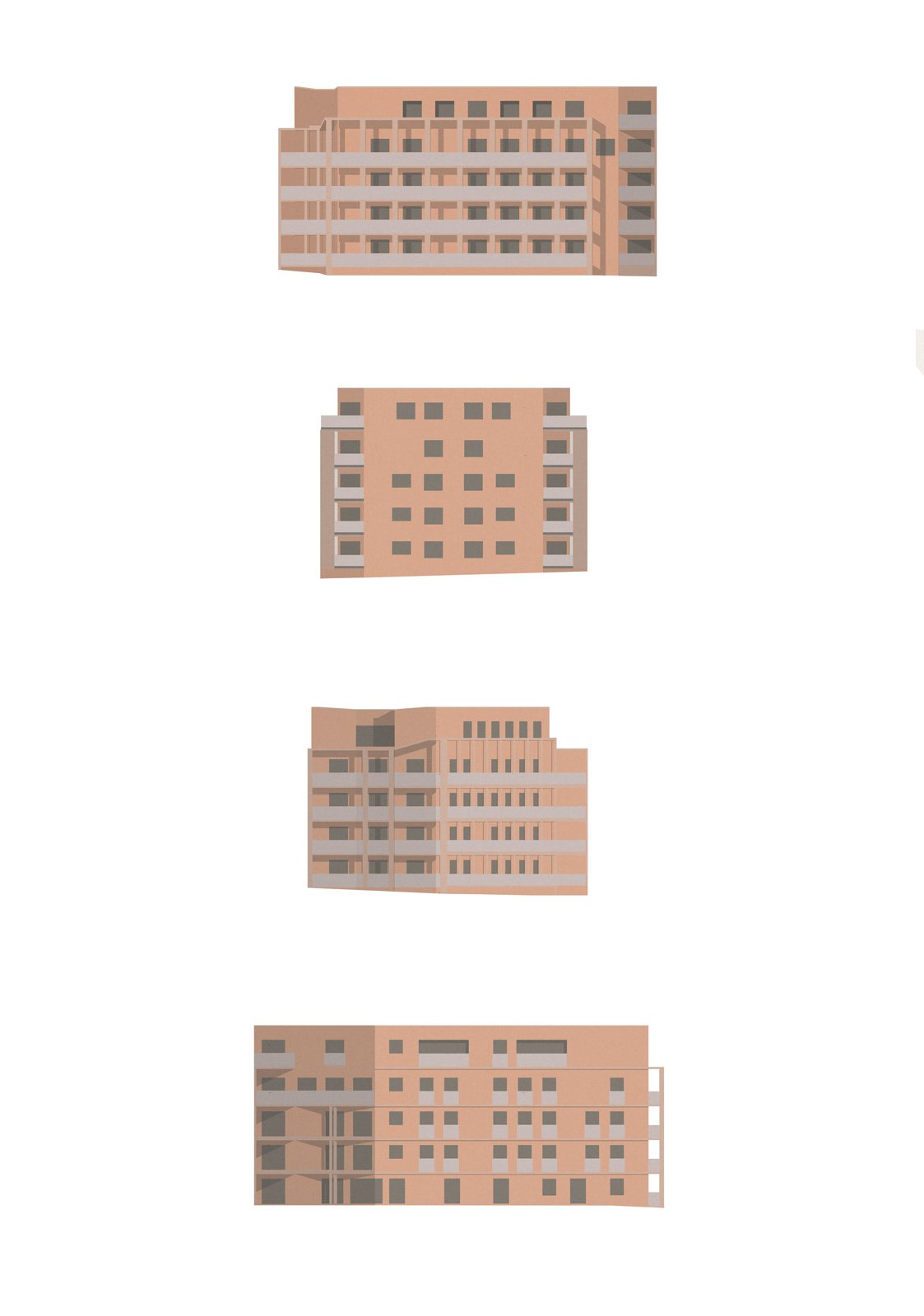
Wilmott Court, elevations – The dignity and wellbeing of residents is key, as is the capacity of a building to orientate inhabitants to the environment, with some 90% of homes being dual or triple aspect
-
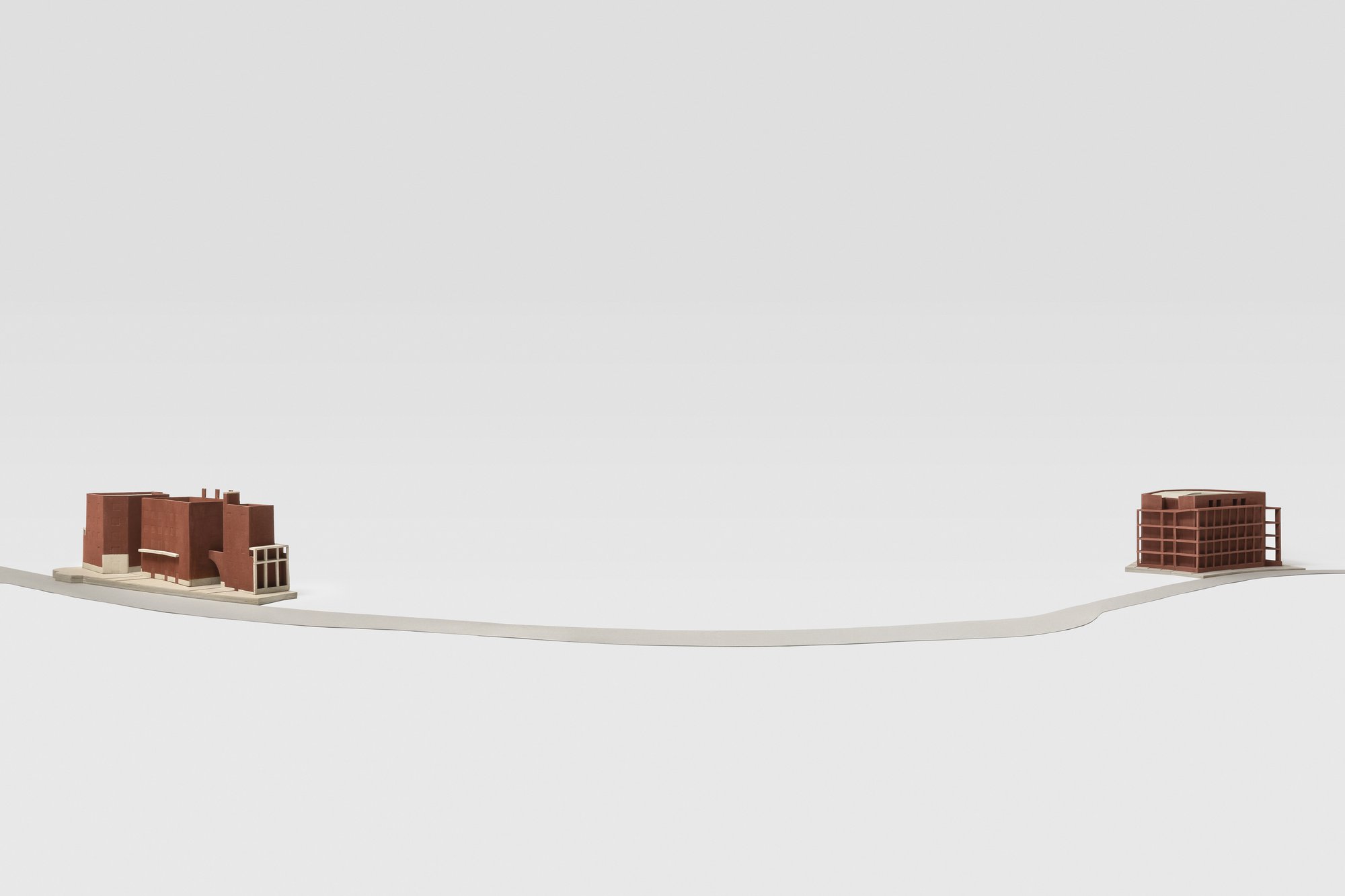
Taylor Court & Chatto Court (left) and Wilmott Court (right) on Well Street, model – They are part of Hackney Council’s ambitious programme of new Council housing, which is providing hundreds of new Council homes through an innovative, in-house and not-for-profit approach

























